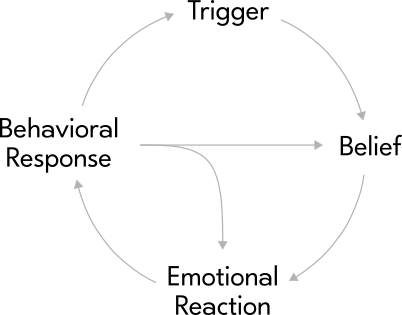
Part 1: Defining Our Terms
[Note: This section may seem overly analytical. If these sorts of nuances do not appeal to you, please skip to Part 2 for a simple model that might be more helpful, or to Part 3 for a list of specific methods intended to aid you in your healing.]...when someone shares a story of trauma without considering its impact or to control another person.Some may or may not see that as synonymous with the terms "venting" or "oversharing". Whatever the case may be, if working through an issue requires expressing specific details of a traumatic event, then it is usually approached with a great deal of caution so as to not cause retraumatization. This strategy is sometimes known as Low Impact Debriefing (LID). We can think of LID as a four-step process [to quote the previous link]:
| Step | Description |
|---|---|
| 1. Self-Awareness | Be aware of the stories you tell and the level of detail you provide. Before sharing, ask yourself: "Are all the details really necessary? Can I give an abbreviated version that still communicates the necessary information?" |
| 2. Fair Warning | Warn your listener that the content you are going to share is disturbing or traumatic. Before sharing, warn the listener: "I would like to debrief a difficult situation with you and the story involves traumatic content." |
| 3. Consent | Seek permission. This gives the listener a chance to decline, or to qualify what they are able and ready to hear. You may ask: "Is this a good time? I heard something really hard today and it involves [insert subject matter]." |
| 4. Limited Disclosure | Decide how much to share. Start with the least disturbing details and gradually add more information as needed. You may not need to share the most graphic or traumatic details to get the benefits of sharing with a peer or loved one. |
Part 2: Sequence & Cycle
A "trigger" is something that is sensed or imagined, whereas a "belief" is how we interpret it, what it means to us. An "emotional reaction" is the set of feelings and sensations that arise from that interpretation, and a "behavioral response" is what is done as a result.| Trigger | Belief | Emotional Reaction | Behavioral Response |
|---|---|---|---|
| • Is it possible to avoid it? • Is it reasonable to exclude it? |
• Will changing our interpretation of the trigger change our feelings about it? • Is the belief an "opinion", an idea that we are not overly attached to, or is it a "core value", some idea with which we deeply identify and connect to our essential character? In other words, is it a fundamental aspect of our being or can we "let it go" without compromising the constructive? |
• Why did the emotion appear? If you "don't know", take your "best guess". • How does the intensity of the feeling correspond to the beliefs about the trigger? |
• Does the response sustain or redirect any of these aspects? In other words, does it guide one into situations where they experience more triggers, is a personal habit being used as confirmation or "evidence" for one's belief, or does the behavior heighten the emotion instead of calming it? |

Part 3: Methods
If at all possible, we should always get to safety first, whether that means leaving a hostile environment, treating an injury or illness with "first aid", and/or some other critical action. Then, we can take further steps to handle the effects of those experiences...Conclusion
I hope this article is, and continues to be, a useful resource for you. If there is any way that I can help, please let me know.